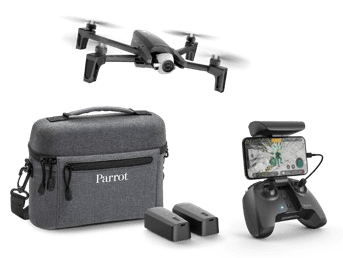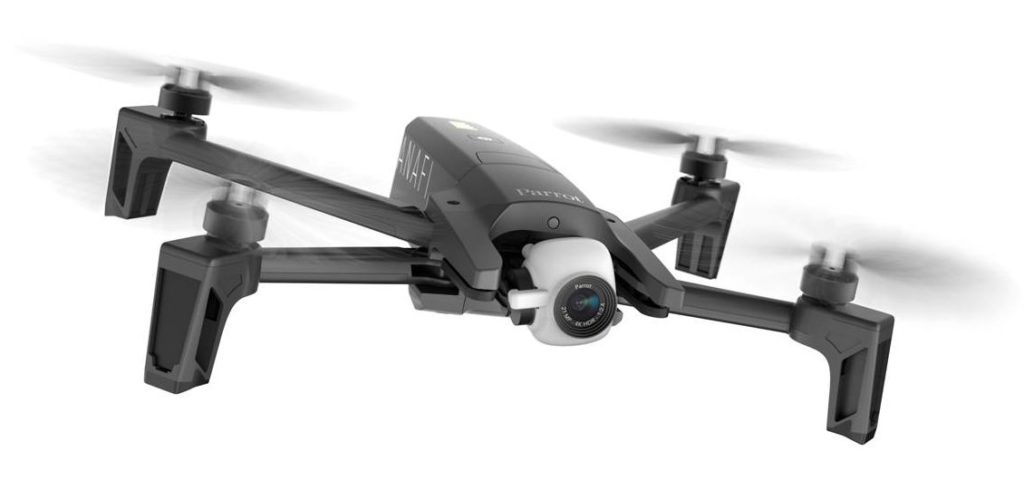French drone manufacturer Parrot have released their earnings report for the third quarter of 2018. It doesn’t make happy reading for those with a stake in the company and drone enthusiasts hoping Parrot will continue to push DJI.
The main concern is a drop in revenues from Parrot’s consumer drone business. In the third quarter of 2018 Parrot’s consumer drone revenues were €12.5m, a 45% drop from the €22.6 generated over the same period last year.
The company claim that these disappointing results reflect “a consumer drone market that is experiencing a growth crisis”. Parrot said the drop is also explained by a change in the company’s product portfolio; namely the fact that there has been a significant reduction in sales for historical products at the end of their lives. Presumably, the Disco and the Bebop 2 are among those models that are no longer flying off the shelves.
Perhaps the main talking point is that both of these factors were not offset by the sales of the Anafi drone, despite its gradual commercial rollout from July 2018.

Read more: Review: Hands On With the Parrot ANAFI
An unexpected contraction of the consumer drone market?
Henri Seydoux, Parrot’s Chairman, CEO and leading shareholder, said: “The end of this year is being complicated by a significant and unexpected contraction of the consumer drone market, which has occurred at the time of the launch of our new drone, the Parrot ANAFI.
Seydoux stops short of blaming the Anafi for contributing to that contraction, though: “While the technological performance and the positive reaction received by this product are in line with our expectations, and even though we have gained market share, in a harsh environment whilst preserving our pricing positioning and strategy, the market reversal has held back our revenue growth and impacted all our financial balances.”
Parrot are having to cut further jobs to restructure the organization in line with this new reality.
A ‘departure plan’ is being put in place for around 100 employees, which Parrot says are focused mainly on international operations. The aim is to reduce the resources consumed by the marketing and production structures and move them in line with current market capacity.
“To adapt to the pace of this market, which is very unstable for the time being, our organization is evolving and our action plan was approved by the Board of Directors on November 22. It aims primarily to secure our capacity for action to respond to the drone market’s potential over the long term.”
Read more: Exclusive: Parrot Explain ANAFI’s Lack of Obstacle Avoidance
Parrot to cut 100 jobs
On September 30, 2018, Parrot’s workforce (permanent and fixed-term contracts) represented 658 people. The Group has 320 staff for commercial drones and 291 for consumer drones.
However, the departure plan will only hit the consumer business. It will not affect the R&D team, which is increasingly being calibrated to meet the challenges of the market by developing products that can be used for both consumer and commercial uses.
“The possibilities offered by the Parrot ANAFI, the solidity of our commercial subsidiaries and our development on the Defense and Security market will be key assets to bounce back: with a decentralized and flexible strategy, we aim to break even on commercial drones by the end of 2019, while safeguarding the resources that will enable us to capitalize on opportunities for acceleration,” said Seydoux.
Read more: A Closer Look at senseFly’s New eBee X
What does this all mean?
It means what we’ve known for a long time: Competing in a market dominated by DJI is tough going. Fortunately, Parrot has a steady set of commercial operations, including software and services from Pix4d, and plenty of cash in reserve to keep it afloat.
Looking ahead to 2019, Parrot is expecting a significant contraction for its drone business. The company predicts that consumer sales will continue to be slow while commercial uses will gradually ramp up.
“The actions taken are expected to reduce the annual loss to a sustainable level to continue responding to the market’s long-term potential,” says the company’s quarterly report.
Parrot is expecting to see stronger growth for its commercial drone companies. Most should be close to breaking even by the end of 2019.
Malek Murison is a freelance writer and editor with a passion for tech trends and innovation. He handles product reviews, major releases and keeps an eye on the enthusiast market for DroneLife.
Email Malek
Twitter:@malekmurison
Subscribe to DroneLife here.
